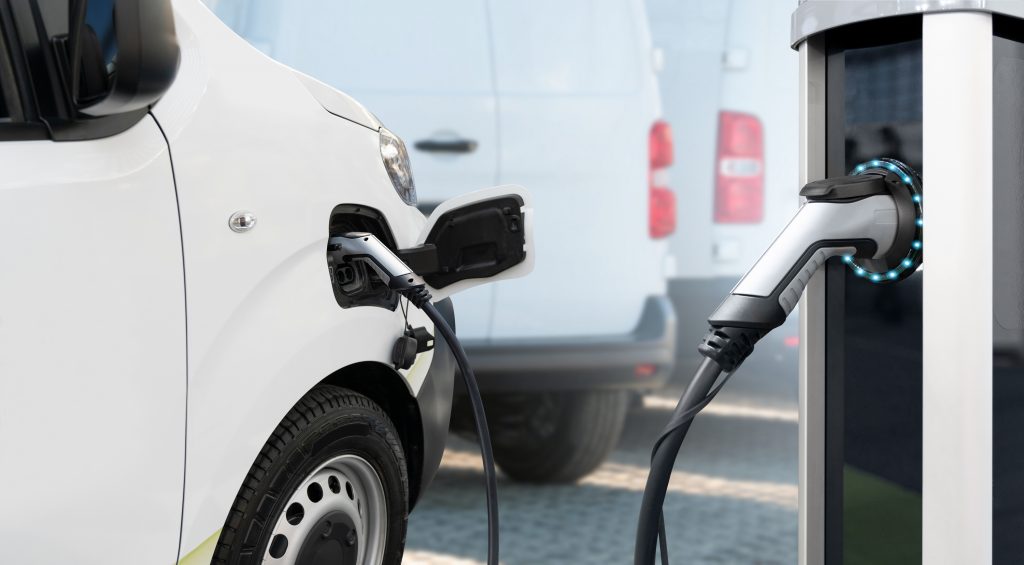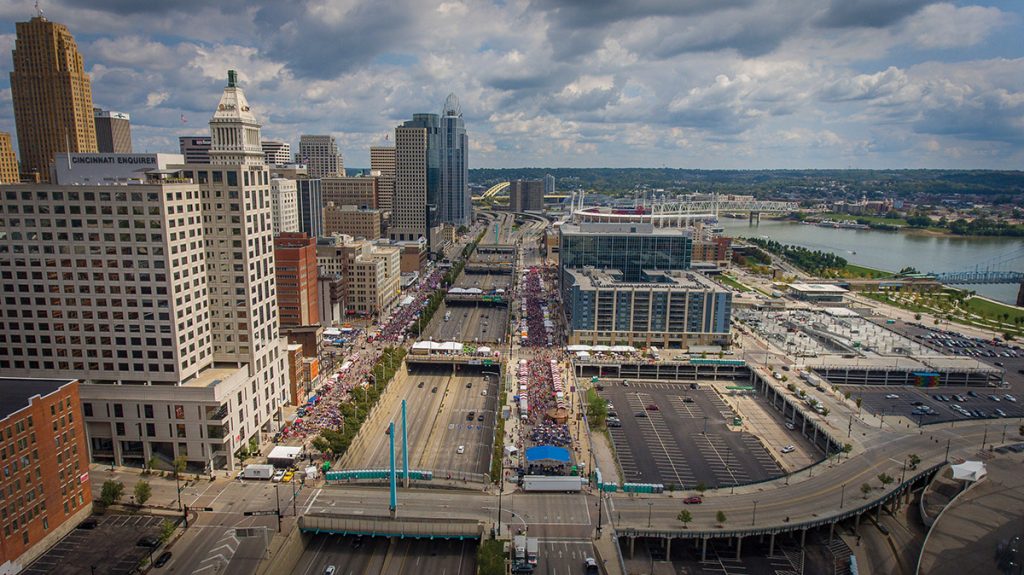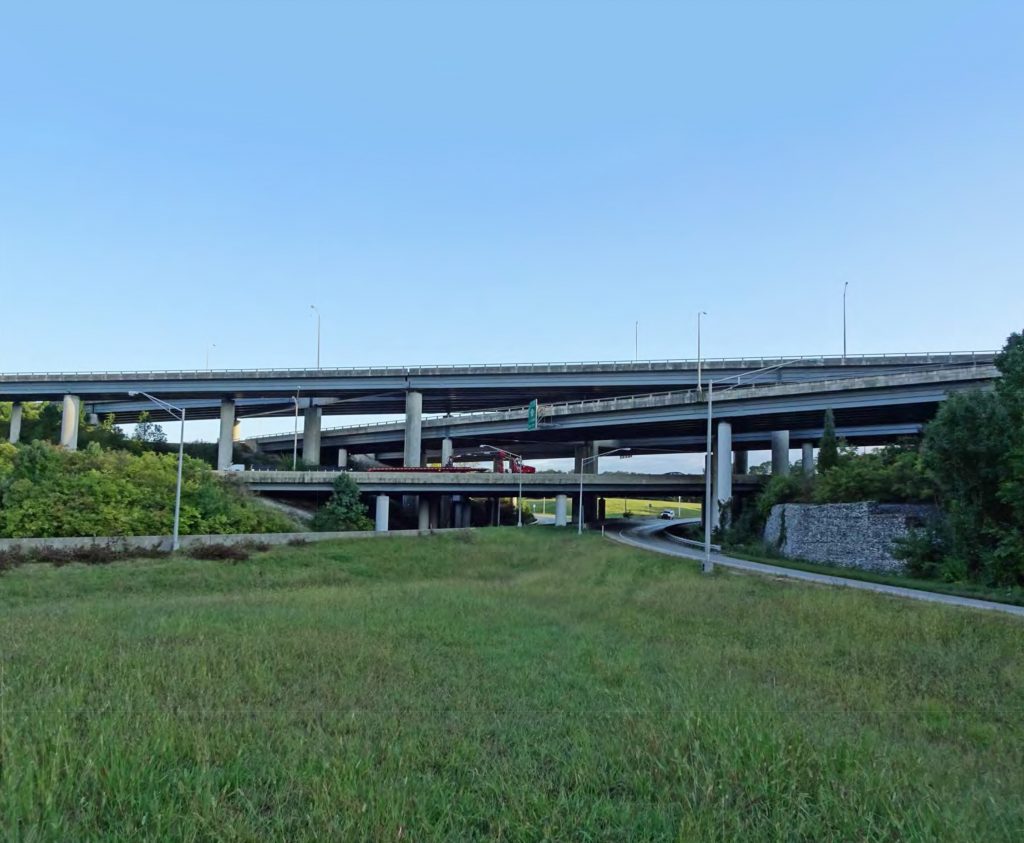On November 15, 2021, President Biden signed into law the Infrastructure Investment and Jobs Act, making $1.2 trillion available over five years for roads, bridges, and major transportation projects as well as for passenger and freight rail, power systems, airports, public transit, water lines, broadband, and more. The level of funding is historic, and it’s been called a once-in-a-generation investment in the nation’s competitiveness.
“We have been talking in this country about investing in infrastructure for five presidencies, maybe more than that, and we finally got it done,” says Pete Metz, vice president of civic and regional partnerships at the Cincinnati USA Regional Chamber.

Now comes the complicated part. While the legislation authorizes an enormous amount of spending, it’s generally agreed that the need is even greater, and much of the funding will be competitive among states and municipalities. “Cincinnati is not unique,” says Eric Beightel, principal infrastructure policy/environmental strategist at HDR Engineering Inc. “Many cities and regions across the country have a backlog for infrastructure. The state of the infrastructure is quite old, and there’s need for improvement.”
The legislation authorizes infrastructure spending on two fronts. It first increases the level of funding that states and municipalities will receive under baseline funding programs that are distributed according to formula. For the Greater Cincinnati region, that formula funding will increase by 24 percent and average $305 million a year for the five-year period, according to a study done by HDR for the Chamber, REDI Cincinnati, the Cincinnati Business Committee, and the Cincinnati Regional Business Committee.
An even bigger impact is expected to come from the creation of more than 20 new grant programs that will award funding on a competitive basis. These “discretionary grant” programs will be administered by government agencies such as the Federal Highway Administration, the Federal Aviation Administration, the Department of Transportation, and others; the recently announced Brent Spence Bridge funding came from this bucket.
To better understand how the Cincinnati metro region could benefit from the federal programs and to begin to prioritize projects for funding, HDR was engaged to connect with stakeholders in the region to analyze potential big projects, assess their readiness for grant applications, prioritize them, and make recommendations for next steps.
The firm worked with the organizations to seek nominations for projects that could compete for the grant programs, then narrowed those down to six. The selection was based on making sure there was a range of geographic diversity—not just projects in the city of Cincinnati—as well as a range of transportation modes. “We were looking for things that are truly regional and are economic drivers,” Metz says.

Three major infrastructure projects that have already been approved for substantial funding were not included in the report because they’re far along in their development: the Brent Spence Bridge, which has been awarded federal funding of more than $1.6 billion; the Western Hills Viaduct, which is considered fully funded through local, state, and federal funds; and the Reinventing Metro plan for bus service expansion, bus rapid transit, and on-demand service, which Hamilton County voters agreed in 2020 to fund with a sales tax increase.
Other potential projects were considered not to be ready for applications yet, as they lacked enough detail to get them on the drawing board during the five-year window. Those include expansion of the Cincinnati streetcar system and potential rail transit to the airport.
The regional projects were assessed using criteria that included the likelihood of local matching funds, typically 20 percent of the project cost but which could be as much as 50 percent; the project’s readiness; and how the project aligns with U.S. Department of Transportation policy priorities like safety, sustainability, climate action, and equity.
The report then makes recommendations for moving forward on each of the six projects in order to get them ready for competitive grant applications. The recommendations could also be relevant for other projects in the region, says Beightel, the report’s lead consultant. “This process could be replicated across the region. These strategies could apply universally to complete other important projects.”

Other regional projects will receive funding and will get support from the Chamber and other entities, Metz says, but the recommended ones are in position to be competitive now. “We view this document not as the only six projects that the Chamber supports, but six projects we believe are poised to take advantage of this deluge of federal infrastructure dollars.”
“This is a huge opportunity not only for the city but for the region,” says Meeka Owens, chair of Cincinnati City Council’s Climate, Environment, and Infrastructure Committee. “It’s an opportunity to think big not only about our climate goals but also about providing multimodal access for residents in this community. Not just getting around by car, but really imagining what public transit looks like, what safer streets and more walkable streets look like, and how we retrofit ourselves for an electric vehicle society.”
Accessing these grants will be important to attracting and keeping businesses in the region, says Kimm Lauterbach, president and CEO of REDI Cincinnati. “Infrastructure is a key component in economic development,” she says. “Both established regional companies looking to grow here and companies that are considering the Cincinnati region to expand or relocate want to know that we have the infrastructure in place to support their business needs.”
Here are the six recommended infrastructure projects, in alphabetical order:
CENTRAL PARKWAY BEAUTIFICATION
Central Parkway has long been one of the city’s principal thoroughfares, built over top of the Miami-Erie Canal, once a critical transportation corridor for people and goods. The four-lane parkway divides Over-the-Rhine, which has experienced sustained investment and transformation over the last 15 years, and the West End, which has historically experienced disinvestment and decline but is eyeing new investment via FC Cincinnati’s TQL Stadium project.
This project (rendering at top) would reimagine a section of the Parkway of roughly 10 blocks from Ezzard Charles Drive (at Music Hall) to Findlay Street (just beyond the entrance to Findlay Market). This stretch would be converted to a “Complete Street,” a thoroughfare that’s usable and safe for everyone and not just those behind the wheel of a car; recommended improvements include a lane for bus traffic, bigger sidewalks, a greenspace median, and a dedicated bicycle pathway. A reconfigured street that can be safely shared by pedestrians, bicyclists, buses, and cars would, in theory, better connect the two neighborhoods. The estimated cost is $20 million.
The HDR report recommends pursuing planning grants so the project’s elements can be better defined, as well as construction grants. It also recommends securing local funding commitments so federal agencies can be confident that local matching dollars are available. “This is an important piece of project readiness,” Beightel says.
Studying and detailing the potential safety, economic, and environmental benefits should be included in a grant application, the report says. And it recommends identifying discrete elements of the project that could be funded in other ways should federal agencies be unwilling to support the entire cost.
COMPLETING THE CROWN
The proposed 34-mile Cincinnati Riding or Walking Network (CROWN) trail would connect four major trails (Wasson Way, Little Miami Scenic Trail, Ohio River Trail, and Mill Creek Greenway) to form a network across Hamilton County. About 18 miles have been completed so far. Key remaining gaps in the trail network include 3.5 miles of the Mill Creek Greenway Trail from Millvale to Lower Price Hill and 2.2 miles of the Ohio River Trail from Lower Price Hill to Smale Riverfront Park. A plan to complete another 3.4 miles on the east side of town has already secured funding through a capital campaign, the report says.
Good hiking and biking trails aren’t cheap. The cost to complete the Mill Creek Greenway and Ohio River Trail sections is estimated at $25 million, which includes the full cost to design, obtain rights-of-way, and build. “Federal infrastructure funds would make a transformational impact in the region’s ability to deliver this project on a rapid timeline,” says Beightel. Federal costs could cover up to 80 percent of the remaining costs, depending on the available local match.
The report recommends including construction of the already-funded east side segment in the application to demonstrate that local matching funds have been secured and to position the project as one that would go a long way to “Completing the Crown.” Beightel also suggests addressing the potentially expensive issue of obtaining rights of way, as the trail will need to cross existing railroad tracks. Securing rights of way early will help demonstrate project readiness, he says.
Several community groups have been involved in planning, designing, and funding CROWN, including Tri-State Trails, Cincinnati Parks, SORTA, and the Wasson Way group. The report recommends emphasizing this collaboration. “The CROWN is a shining example of building a coalition to deliver on a promise to connect the community,” it says. “These partnerships show community support and the importance of the project to future users.”

EV CHARGING STRATEGY
The federal infrastructure law enables historic investments in a national network of electric vehicle charging infrastructure and requires states to develop statewide plans to access funding under a newly devised EV charging network formula. The program will provide nearly $5 billion over five years to help states create a network of charging stations along designated alternative fuel corridors, particularly along the interstate highway system. Ohio and Kentucky officials drafted plans that anticipated charging stations at interstate exits.
Stations will also be needed in cities and in suburban and rural areas not near interstates, of course. The HDR report recommends that a plan be drafted for creating charging stations and other electric vehicle infrastructure within the Cincinnati region in order to gain funding through grant programs. Such a plan will allow the region to compete for funding from discretionary grant programs, it says. “Those needs must be defined, with locations identified, costs estimated, and partnerships established,” the report says. “A regional EV Plan can accomplish that and potentially more, positioning Cincinnati to be a leader in electrification of the transportation system.”
Most of the states’ planning so far has focused on the new funding formula, the report says, but the region could benefit from a coordinated strategy to access money from grants. Interested partners so far include Duke Energy and OKI, but the network should be broadened. “Achieving this goal will require a coordinated effort across a wide range of stakeholders,” Beightel says.

FT. WASHINGTON WAY DECKS
The East-West Expressway that links Interstate 71 with Interstate 75 in downtown Cincinnati is a product of 1950s-era car-oriented urban planning. In the early 2000s, the eight-lane highway was reconstructed so its footprint was narrower and deeper, enabling pedestrian bridges and streets to cross over top and opening up the riverfront for The Banks development. As part of that construction, the city invested in additional structural pilings to allow for future caps, or decks, to be built over the highway to create additional public space and development land.
City and county officials have supported this project for years, submitting an application for a $42 million grant to begin detailed planning. That application didn’t make the cut, however, and wasn’t included in grants announced by the U.S. Department of Transportation in early March. The application is expected to be resubmitted for consideration in a later round of funding. “If you don’t win in year one, you can come back in year two,” Beightel says.
The report recommends further solidifying support among more stakeholders and detailing the concept in greater detail. “Further defining the vision and seeking and securing letters of support from stakeholders would be another important step,” it says. “Once planning dollars are committed, federal officials may consider the agency ‘invested’ in the project and want to see it through to completion, further enhancing its competitiveness.”
The report also recommends improving readiness by starting work now on an environmental review, which the Department of Transportation will require and which can involve a lengthy process.

IMPROVING THE I-71-75-275 INTERCHANGE IN NORTHERN KENTUCKY
This is the costliest of the six recommended projects, with an estimated total of $450 million. The interchange connects Interstate 275 with Interstate71/75 in Northern Kentucky and carries more than twice the traffic it was designed for, the report says. It’s the main route to the airport, and thus traffic volume is expected to continue growing. “This escalating traffic, coupled with challenging merges and highway entrance and exit patterns, has resulted in growing congestion, safety concerns and travel delays in the interchange area,” the report says.
The Kentucky Transportation Cabinet is conducting technical studies and gathering data on traffic volume, travel time, and crashes to determine what improvements are needed. The agency expects the project will be completed in phases, although no timetable has been finalized, the report says.
The project’s scale means that identifying specific elements that could be funded through smaller grants may be advisable, the report says. It also recommends identifying non-interstate improvements that will be necessary, such as noise barriers, that could be funded in other ways. Doing so would demonstrate broader support for the project. “Focusing on these improvements is an opportunity to maximize potential matching funds from other non-DOT project partners,” the report says. “This type of commitment is key to strengthening any discretionary grant application.”
I-75 MILLIKIN WAY INTERCHANGE
Officials in Butler County’s fast-growing Liberty Township have received federal approval for a new Interstate 75 interchange at Millikin Way, which planners say would help relieve traffic congestion from the I-75 interchanges at Liberty Way to the south and at Ohio 63 to the north. Ohio 63 has become a major retail and logistics center, adding thousands of vehicles to the transportation network around it, the report says. A new interstate interchange would also open 700 acres of land to development, similar to the Union Centre interchange six miles to the south.
Liberty Township’s population is expected to steadily increase over the next decade, thanks in part to new developments from The Christ Hospital, which has expanded there, and Cincinnati Children’s Hospital, which opened its large Liberty Campus. “With this current and forecasted growth in the area, providing access to the Interstate to help carry increased commuter and commercial traffic is essential,” the report says.
The interchange is supported by Butler County, Liberty Township, the Ohio Department of Transportation, and the Ohio-Kentucky-Indiana Regional Council of Governments, the report says. That kind of support, as well as the planning that’s already been done around the proposal, demonstrate the kind of public support that federal grant makers look for.
HDR also recommends that federal grant applications estimate and describe in detail how traffic conditions will be impacted if the interchange is not built and development in the township continues as expected. “The narrative needs to describe present-day conditions and contrast them with expected future conditions with and without the interchange,” Beightel says.
NEXT STEPS
In order to improve competitiveness for federal funding, it’s important to have a coordinated vision for the region, Beightel and his staff write in the HDR report. “This helps communicate to the reviewers that there is a shared vision for the region and that the projects are advanced in a thoughtful and strategic way. Despite the unprecedented funding and the number of discretionary programs to pursue, they are all still likely to be oversubscribed, meaning that certain best practices to help applications rise to the top are still applicable.”
The report recommends that elected officials at the local, state, and federal levels be engaged and asked for support and that project planning and preliminary engineering continue. “It’s critical that project development continue on the key projects to get them ready to receive and spend construction dollars,” it says. For projects that aren’t that far along yet, pursuing grants for planning should be prioritized. It also recommends that local matching funds be maximized to demonstrate support for the projects and to help stretch the federal funding, both of which would be viewed favorably by grant-making agencies.
“These six projects are critical to economic growth and job creation,” says Gary Lindgren, president of the Cincinnati Business Committee and the Cincinnati Regional Business Committee. “Taking a coordinated, collaborative approach with our local partners will best position us to drive infrastructure investment to the Cincinnati region.”


